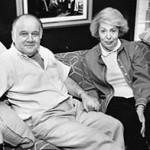The posts on this page describe some real-life, social uses of SentenceShaper. Aphasia centers and clinics with a life participation approach can provide important support in helping people with language problems use technology in real life. But, as observed by Purvis and Ostberg, it is the people with language problems themselves who may discover unexpected and […] Read more »
A speech to remember (with audio excerpt)

One of the first aphasia survivors to use SentenceShaper was Mrs. Elaine Wolpe. The devastating impact of her aphasia is movingly described in her son David J. Wolpe’s book, In Speech and in Silence: The Jewish Quest for God (1992, Henry Holt & Co). In the spring of 1999, when her husband, Rabbi Gerald Wolpe […] Read more »
Running for office

In 2006, SentenceShaper was used for political campaigning! This is discussed in an article entitled “Back to the Council,” from which we quote below: “Even though a stroke robbed Haworth Councilman and attorney Ken Albrecht of his ability to speak, it didn’t take away the environmental law specialist’s intelligence, reasoning skills, or quest to return […] Read more »
Use in a social support group: The importance of one’s own voice

Barbara Purves and Heidi Ostberg (2010) describe how SentenceShaper was used by a man with moderate-severe nonfluent aphasia and apraxia of speech to participate more fully in a social support group. He used the program to record a shared text that is traditionally read aloud at the start of the group’s meetings. His spontaneous speech is typically limited to short, […] Read more »